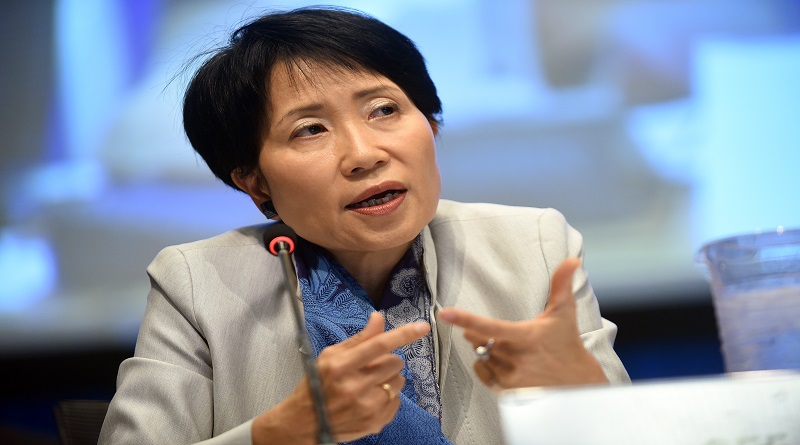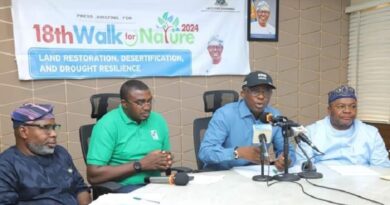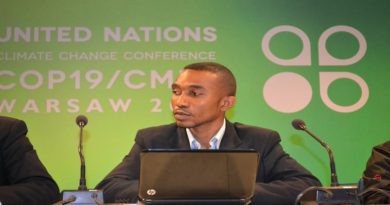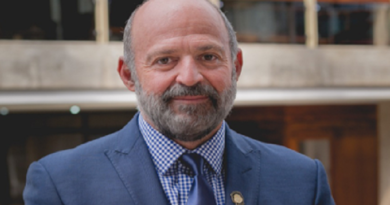WDCD: How GEF invests over $876m in restoring land, livelihoods
The Global Environment Facility (GEF) has invested more than $876 million in resources for over 190 land degradation projects and programmes that encourage the use of sustainable land management to support national and regional development priorities since 2006.
This year, “Our land. Our home. Our Future,” is the theme for the World Day to Combat Desertification (WDCD), observed every year on June 17 to promote public awareness of international efforts to combat land degradation.
This year, the United Nations, led by the UN Convention to Combat Desertification (UNCCD) highlighted the link between desertification and migration. The UNCCD slogan draws global attention to the central role productive land can play in turning the growing flow of migrants abandoning unproductive land into communities and nations that are stable, secure and sustainable going forward.
Migration is driven by the loss of productive land to desertification. Africa is particularly susceptible since its economy is largely dependent on agriculture and it is estimated that 65% of its lands are already degraded. The region also has the highest level (70%) of youth who work but live in poverty. Africa’s mostly rural population, which is growing rapidly, is facing unprecedented livelihood challenges due to the combined effects of degrading land, low levels of development and extreme weather events.
The UNCCD celebrated the occasion in Africa with a high-level symposium on the theme “Our Land. Our Home. Our Future,” in Ouagadougou, Burkina Faso, hosted by the Ministry of Environment, Green Economy and Climate Change, the event was opened by His Excellency Mr. Roch Mark Christian Kabore, President of Burkina Faso, who explored approaches to address the root causes of migration and instability linked to land degradation and unsustainable resource management practices.
The Global Environment Facility (GEF) serves as financial mechanism to the UNCCD and provides funding to assist developing countries in meeting the objectives of the convention.
Achieving land degradation neutrality
Improving the way we manage land though Sustainable Land Management (SLM) can help offer young people new opportunities for income generation in sectors such as agriculture, food processing and tourism. It can also move the world closer to the Land Degradation Neutrality (LDN) objectives set at the last UNCCD Conference of the Parties (COP 12) in Ankara, Turkey. The concept of LDN responds to an immediate challenge: intensifying the production of food, fuel and fiber to meet future demand without further degrading our finite land resource base. LDN envisions a world where human activity has a neutral, or even positive, impact on the land.
At COP 12, Parties reached a breakthrough agreement to endorse a vision that links the implementation of the Convention to the SDGs in general, and target 15.3 in particular, which states: “By 2030, combat desertification, restore degraded land and soil, including land affected by desertification, drought and floods, and strive to achieve a land degradation-neutral world”. The first step in achieving this vision is the LDN Target Setting Program, through which over 100 countries have committed to set targets to achieve LDN by 2030.
The next UNCCD Conference of the Parties (COP 13) will take place in Ordos, China September 6-16, 2017, where Parties will decide on the Strategic Framework that will guide action under the Convention from 2018-2030.
The global community has realized that besides conserving forests and ecosystem services, we need to start restoring landscapes to ensure that ecosystem services, including the provision of freshwater, food, fuel and fiber, air and water purification, climate regulation, and habitats for wildlife are maintained in the long run.
As a financial mechanism of the UNCCD, the GEF supports the implementation of the convention through its Land Degradation focal area, its Sustainable Forest Management strategy, and by supporting several initiatives for forest and landscape restoration like the Bonn Challenge and New York Declaration on Forests, which together set the global goal to restore 350 million hectares of land; including the Africa Forest Landscape Restoration Initiative (AFR100), which has a target of restoring 100 million ha across the continent by 2030.
In order to support countries’ pledges to such initiatives, their LDN targets, and the realization of the SDGs, the GEF will seek to have a larger impact on landscape restoration in its next four-year operational phase, known as GEF-7.
Successes in landscape restoration
The Great Green Wall for the Sahara and Sahel initiative (GGWSSI), launched in 2007, has been a game-changer in restoring Africa’s degraded landscapes through an integrated landscape approach and in the process transforms millions of lives in one of the world’s poorest regions, the Sahel. The GGWSSI is now being implemented in more than 20 countries across Africa’s Sahel region. Once complete, the Wall will be the largest living structure on the planet – 8000 km stretching across the entire width of the Continent.
Since its launch in 2007, major progress has been made in restoring the fertility of Sahelian lands. In Ethiopia, 15 million hectares of degraded land have been restored, and land tenure security improved. In Senegal, 11.4 million trees have been planted and 25,000 hectares of degraded land have been restored. Meanwhile, in Nigeria, 5 million hectares of degraded land have been restored by smallholder farmers on their lands and 20,000 jobs created.




